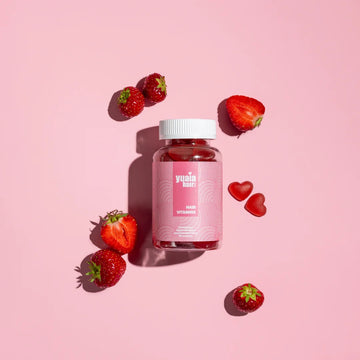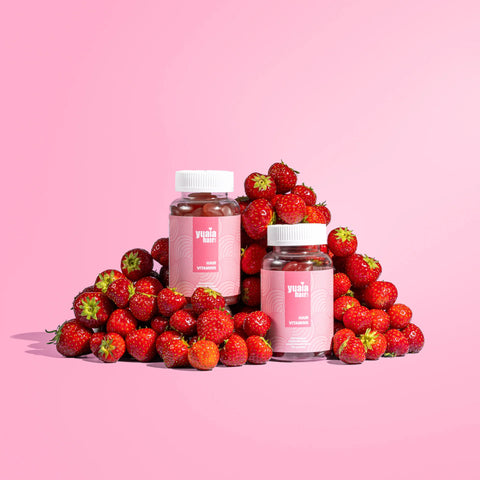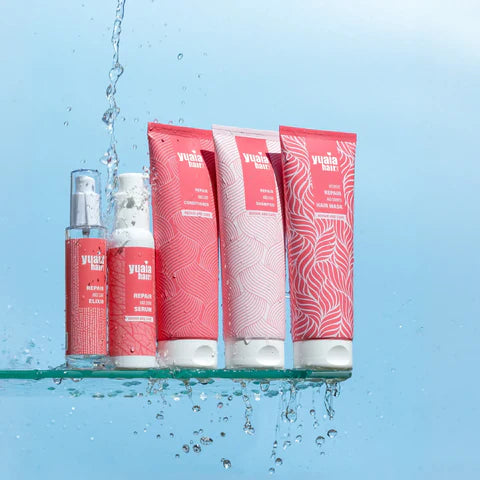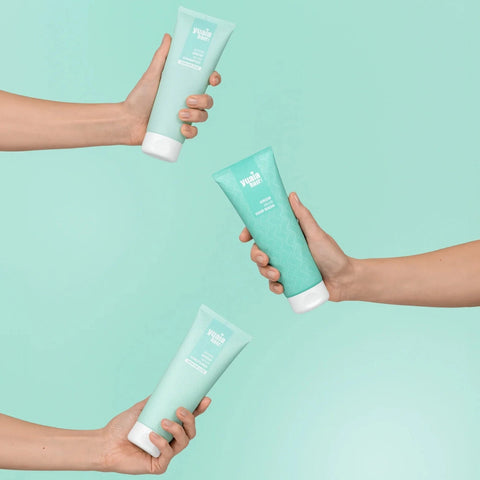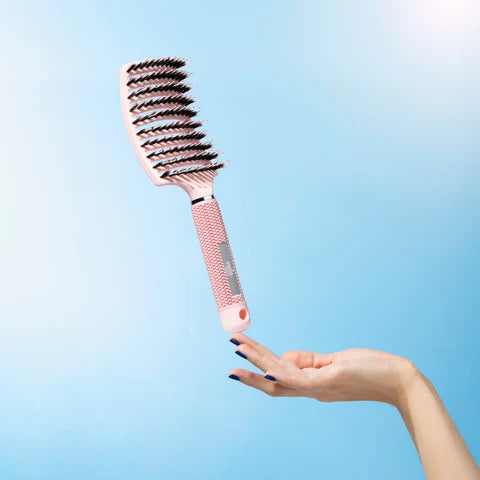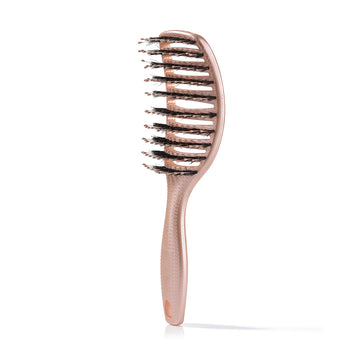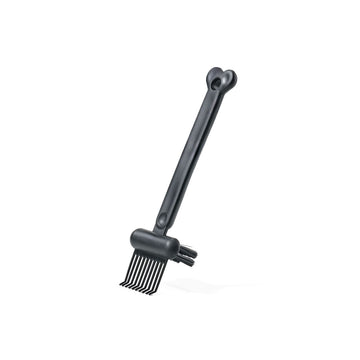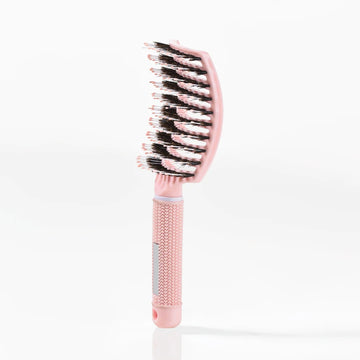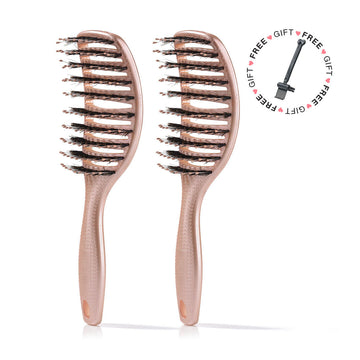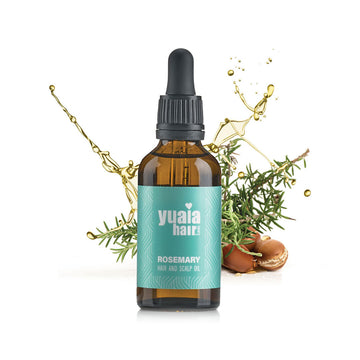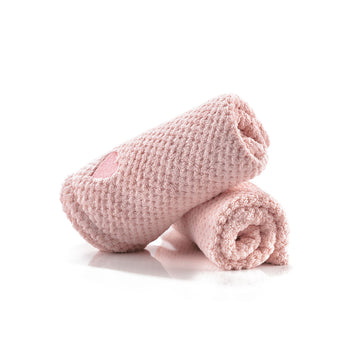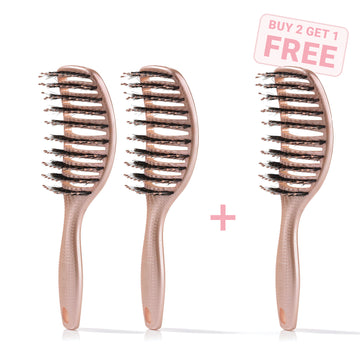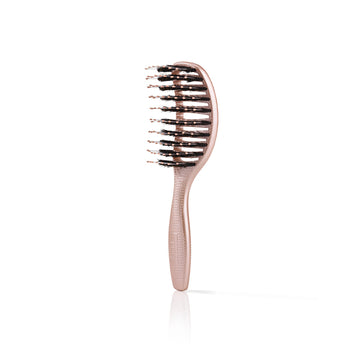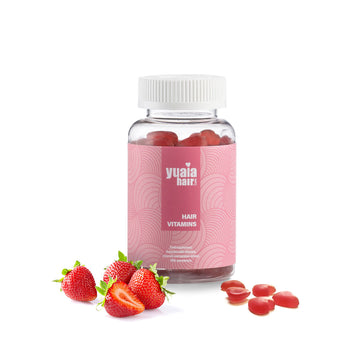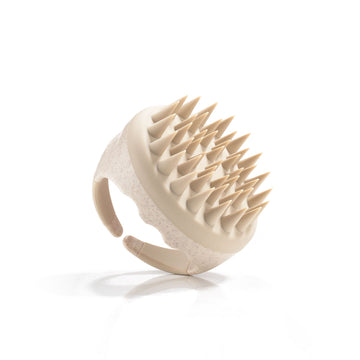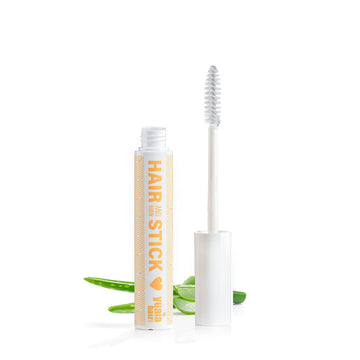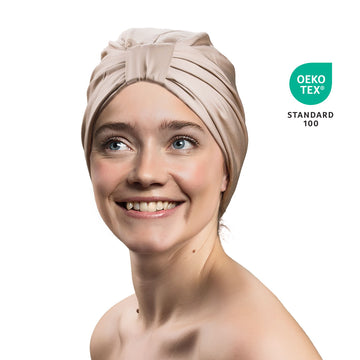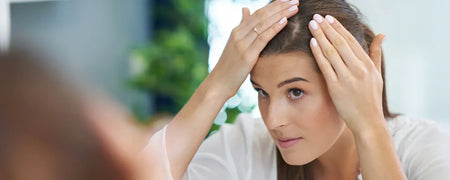
Pimples on the scalp: Causes and solutions

by Nanna Bundgaard | 11. September 2023 | Reading time: 10 minutes
Read more about the authorPimples on the scalp can be both annoying and bothersome. But by understanding the reasons behind and knowing about effective solutions, you can get control of this skin disorder. In this blog post, we will dive into the most common causes of scalp pimples as well as present you with some effective ways to treat them. So keep reading to get the knowledge you need for a healthier scalp!
Table of contents
- What are scalp pimples?
- Causes of scalp acne
- Solutions for scalp acne
- Good products for scalp acne
- Are scalp pimples a common skin condition?
What are pimples on the scalp?
Pimples on the scalp refer to the presence of inflammatory lesions on the skin of the scalp. These pimples can vary in size and appearance and can appear as small red spots, white bumps or even large, tender boils. They can also be accompanied by itching, a tendency to form crusts or scales in the area. It is important to note that pimples on the scalp can be both acute and chronic and can affect both men and women of all ages. It is important to identify and treat scalp pimples correctly to avoid further irritation and discomfort.
There are several types of pimples on the scalp, these include:
1. Papules: These are small red bumps that may be tender and slightly swollen.
2. Pustules: These are pimples that have a white or yellowish center and are surrounded by a red base. They may be filled with pus.
3. Abscesses: Abscesses are large, painful pimples that may be filled with pus and may require medical treatment.
4. Itchy rash and hives: These can cause itchy and red rashes on the scalp.
5. Inflammation of the skin around the hair follicles: This can result in red, sore pimples or bumps on the scalp.
6. Seborrheic dermatitis - dandruff: This is a common condition that can lead to red, scaly pimples on the scalp.
It is important to correctly identify the specific type of pimples on the scalp in order to treat them effectively.
Causes of pimples on the scalp
An oily scalp and tight hairstyles can increase the occurrence of pimples on the scalp.
1. Greasy scalp
Excess production of sebum, insufficient hair washing and cleaning, and the use of heavy, oil-based products are some of the causes of pimples on the scalp. When too much sebum is produced on the scalp, it can lead to blockage of the hair follicles and inflammation. Inadequate hair washing and cleaning also allows for the accumulation of dirt, bacteria and excess dead skin cells on the scalp. The use of heavy, oil-based products can contribute to an oily scalp by clogging the pores and promoting sebum production in the area. It is important to be aware of these factors to prevent pimples on the scalp. Read more about oily scalp here .

2. Hair collection and tight hairstyles
Accumulation of sweat and impurities in the hair can lead to inflammation of the scalp. Lack of air circulation in the scalp can worsen the problem by creating an environment where bacteria thrive. Friction between the hair and the skin can also contribute to the formation of pimples on the scalp.
3. Hormonal changes
Puberty and hormonal changes can cause increased activity in the sebaceous glands, which can result in pimples on the scalp. Women also experience hormonal changes during pregnancy or menopause that can affect the condition of the skin. Both men and women can suffer from hormonal imbalance that contributes to the appearance of pimples on the scalp.
Bacteria and inflammation also play a role in the development of pimples. Using bad products on the hair or lack of hygiene can create an environment where bacteria thrive. Stress and poor diet are additional factors that can affect the body's hormones and lead to problems such as pimples both on the face and scalp.
4. Stress and poor diet
Increased stress levels can affect hormones and contribute to inflammatory conditions in the skin. A poor diet with too much sugar or fat can also worsen these inflammatory conditions. In addition, a lack of nutrients such as vitamins A, E, D, B6 and omega-3 fatty acids can have a negative effect on the health of the scalp.
5. Use of bad products
The use of poor hair care products, including shampoos, conditioners and styling products, can contribute to the formation of pimples on the scalp. Some products contain ingredients that can clog pores and irritate the skin, resulting in inflammation and breakouts. It is important to choose scalp-friendly products that do not contain harmful ingredients.
6. Allergic reactions
Some people may develop allergic reactions to certain ingredients in hair care products, such as parabens, sulfates or fragrances. These allergic reactions can lead to irritation and pimples on the scalp. If you experience pimples after using certain products, you should consider switching to hypoallergenic alternatives.
7. Excessive use of styling products
The use of styling products such as hairspray, wax or gel can clog the pores and create a buildup of product residue on the scalp. This can lead to the formation of pimples and inflammation. It is important to use styling products carefully and avoid using too much or too often.
8. Hygiene
Lack of hygiene, such as not washing your hair regularly or not cleansing your scalp properly, can contribute to the formation of pimples. It is important to maintain good hygiene and wash the hair with mild, scalp-friendly products to avoid the accumulation of dirt, oil and bacteria.
9. Hairbrushes and towels
The use of dirty hairbrushes or towels can transfer bacteria to the scalp and contribute to the development of pimples. It is important to clean and disinfect hairbrushes regularly and use clean towels to dry hair. You can read our guide to cleaning hairbrushes here .
10. Genetics
Genetics also play a role in the occurrence of pimples on the scalp. If your parents or siblings tend to have pimples, there is a high probability that you will also experience it. Heredity can affect the skin's tendency to produce excess oil and clog pores, which can lead to the formation of pimples.
It is important to note that pimples on the scalp usually do not pose a serious health risk, but they can be bothersome and uncomfortable. If you experience repeated or severe breakouts of scalp pimples, it may be a good idea to visit a dermatologist or professional hair care expert for advice and treatment.
Solutions for pimples on the scalp
1. Clean the scalp thoroughly
Clean the scalp thoroughly:
- Use a mild dandruff shampoo that contains salicylic acid or zinc pyrithione
- Wash your hair regularly to remove excess sebum and dirt
2. Avoid picking up your hair and avoid tight hairstyles
- Avoid tying your hair tightly, as this can create moisture and heat in the scalp, increasing the risk of pimples.
- Choose loose hairstyles rather than tight buns or braids to reduce pressure on the scalp.
3. Make sure you eat healthy and drink enough water
A healthy diet and sufficient water are essential for a healthy scalp. Avoid fatty foods that can increase the production of sebum and lead to pimples on the scalp. Instead, eat fresh vegetables, fruits and whole grains, which contain important nutrients to maintain a normal and healthy scalp. Also remember to drink at least 8 glasses of water a day to keep your body hydrated from the inside out.
4. Reduce stress and get enough sleep
When it comes to reducing stress and getting enough sleep, there are some effective methods you can use. Try incorporating relaxation techniques such as meditation or deep breathing into your daily routine to reduce stress levels. It is also important to maintain a regular sleep schedule and avoid screen time before bed to ensure a good night's sleep.

Good products for pimples on the scalp
When it comes to treating pimples on the scalp, there are several products that can be effective. Here are some of the best products to fight scalp pimples:
1. Dandruff shampoo with salicylic acid or zinc pyrithione:
A mild dandruff shampoo that contains salicylic acid or zinc pyrithione can be effective in cleansing the scalp and removing excess sebum and dirt. These ingredients help exfoliate the skin and prevent clogging of pores, which can reduce the appearance of pimples.
2. Tea tree oil:
Tea tree oil is known for its antibacterial properties and can be effective in treating pimples on the scalp. You can try adding a few drops of tea tree oil to your shampoo or use a shampoo that already contains tea tree oil.
3. Aloe vera gel:
Aloe vera gel has natural antibacterial and anti-inflammatory properties that can help treat pimples on the scalp. Apply a thin layer of aloe vera gel directly to the affected areas and leave it on for 15-20 minutes before rinsing it off.
Products with aloe vera
4. Apple Cider Vinegar:
Apple cider vinegar is known for its cleansing properties and can help balance the pH of the scalp. Dilute apple cider vinegar with water in a ratio of 1:1 and apply it to the scalp after washing hair. Leave it on for a few minutes before rinsing it off. Read our guide on apple cider vinegar for hair here .
Always remember to read and follow the instructions on the product, and if you experience severe or persistent problems with scalp pimples, you should see a doctor or skin care specialist for further advice and treatment.
Are pimples on the scalp a common skin condition?
Yes, scalp pimples are a common skin condition that affects many people. It is known as "folliculitis" and occurs when the hair follicles on the scalp become blocked and infected. This can result in the formation of red, itchy pimples or boils that can be painful.
There are several factors that can contribute to the development of pimples on the scalp. One of the most common causes is overproduction of sebum, which can lead to blockage of the hair follicles. This can happen due to hormonal changes, stress or poor scalp hygiene.
In addition, the use of certain hair products such as oils, gels or waxes can also contribute to the formation of pimples on the scalp. These products can clog hair follicles and promote bacterial growth.
It is important to treat pimples on the scalp to avoid further infection or scarring. There are various treatment options, including medicated shampoos with antibacterial ingredients such as benzoyl peroxide or salicylic acid. These shampoos can help cleanse the scalp and reduce inflammation.
If the pimples on the scalp are severe or persistent, it may be necessary to consult a dermatologist. They can prescribe the correct treatment.
To prevent pimples on the scalp, it is important to maintain good scalp hygiene. Wash your hair regularly with a mild shampoo and avoid excessive use of hair products. Also, keep the scalp clean and dry by avoiding touching it with dirty hands or towels.
Also, avoid scratching or picking at the pimples, as this can worsen the infection and lead to scarring. If necessary, a cool compress or topical treatments such as tea tree oil can be used to relieve itching and reduce inflammation.
Get a 10% discount code sent to you
Receive the best tips and tricks for your hair from Lotte and Nanna 🥰

 2-4 day UK delivery
2-4 day UK delivery
 25.000+ satisfied customers
25.000+ satisfied customers
 Satisfaction Guarantee
Satisfaction Guarantee



